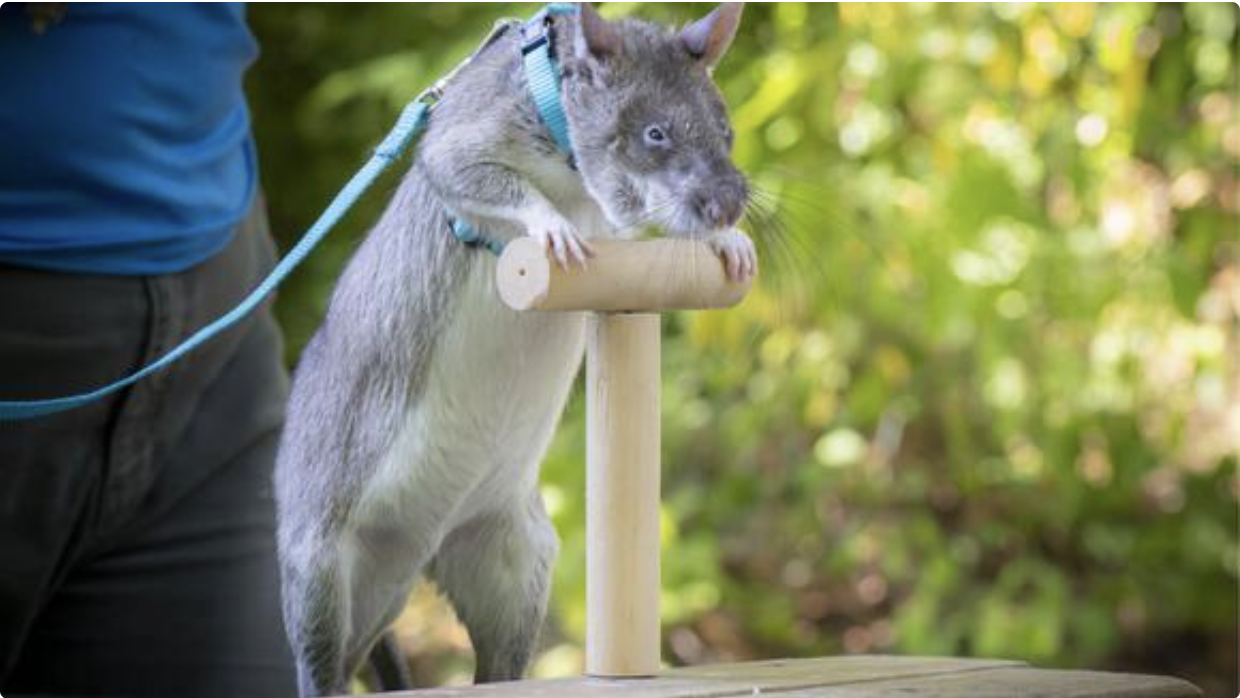PORTLAND, Ore. (KOIN) — The Oregon Zoo has introduced two unusual new residents to its collection — a pair of giant pouched rats known for their size, intelligence, and incredible sense of smell. Officials announced Friday that the rodents, named Capri and Sun, are now ready to meet the public.
A Unique Arrival
Capri and Sun, both East African savannah pouched rats, arrived at the zoo earlier this year. While some visitors may expect to see lions, elephants, or giraffes when they enter a zoo, these large rodents have quickly become a favorite topic of conversation.
“Pouched rats are very intelligent, and they have some of the best noses in the world,” said Eliza Lee, who manages the Oregon Zoo’s ambassador animal area. “In Africa, these rats are trained to sniff out landmines and signs of illegal wildlife trafficking.”
Also Read
Why They’re Called “Pouched” Rats
The term “pouched” comes from the animals’ hamster-like cheek pouches, which they use to store food. Unlike typical household rodents, these rats can carry and transport surprisingly large amounts of food in their cheeks, an adaptation that helps them survive in the wild.
Training in Portland
At the Oregon Zoo, Capri and Sun are keeping their senses sharp. Trainers hide lavender-scented targets under leaves, and when the rats find them, they are rewarded with favorite snacks like sweet potato and broccoli.
Visitors are often surprised to see the rats out on small harnesses. While walking them on leashes may seem unusual, it is part of the zoo’s enrichment program and a way to bring them into closer contact with guests.
“Well, not that small,” the zoo joked in its announcement.
Bigger Than Most Expect
Lee said most people are taken aback when they see the animals in person.
“People are always surprised by their size,” she explained. “Pouched rats can be 30 inches long and weigh more than three pounds. That’s as big as a small dog!”
Though they spend much of their time behind the scenes, Capri and Sun often join staff in the animal encounter theater, where they help educate visitors about their species. They also make occasional appearances at daily zookeeper chats at 12:30 p.m. and 2:00 p.m.
A Wild Home in Africa
In their natural habitat, giant pouched rats live in the savannahs and forests of Kenya, Tanzania, Zambia, and the Democratic Republic of Congo. They play an important ecological role, foraging for food and helping to disperse seeds.
The Oregon Zoo’s interest in these rodents ties into its broader conservation work. The zoo partners with the Niassa Carnivore Project in Mozambique’s Niassa Special Reserve, offering education and training programs for local communities. These efforts aim to reduce human-wildlife conflict, minimize the risk of disease transmission, and foster coexistence between people and species such as the pouched rat.
Rats as Conservation Allies
While the word “rat” often sparks negative reactions, zoo officials hope Capri and Sun will change perceptions. Their ability to detect scents has already been harnessed in life-saving ways abroad.
In Africa, trained pouched rats — sometimes called “HeroRats” — are used to identify landmines left behind from past conflicts. Their light weight allows them to walk safely across minefields without triggering explosions, while their sensitive noses help them pinpoint dangerous explosives.
They have also been used to detect diseases like tuberculosis in medical samples, making them invaluable allies for public health.
Education Through Encounters
By introducing visitors to Capri and Sun, the zoo hopes to highlight both the ecological importance and the practical value of these remarkable animals.
“Having these animals here helps us start conversations,” Lee said. “People may come in thinking, ‘It’s just a rat,’ but they leave with an understanding of how extraordinary they really are.”
For Portland families, the chance to see the giant rats up close offers a blend of curiosity and surprise. And for zoo staff, it’s another opportunity to connect guests with wildlife conservation on a global scale.












